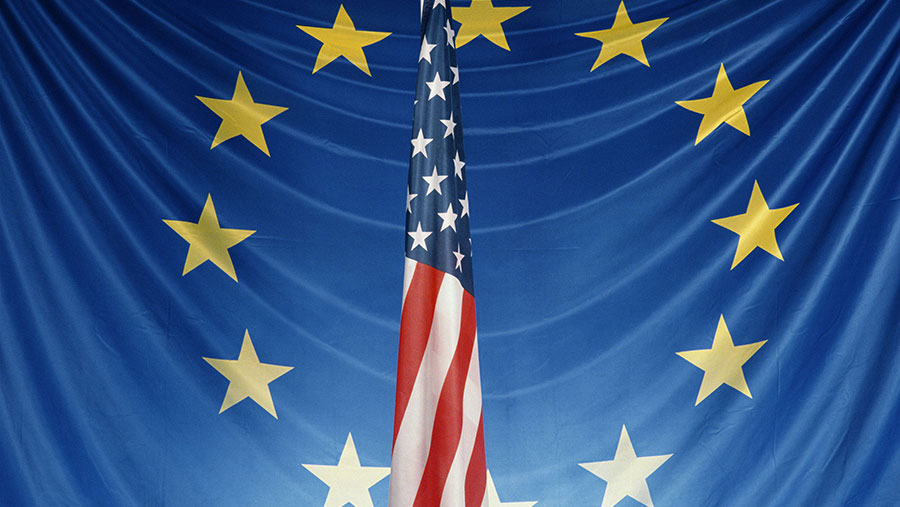‘US trade deal could drag down EU farmgate prices’
 © Photo Alto/Rex Shutterstock
© Photo Alto/Rex Shutterstock EU farmers could face lower farmgate prices as a result of an EU-US trade deal being negotiated, says the US department of agriculture (USDA).
The controversial free trade deal, called the Transatlantic Trade and Investment Partnership (TTIP), could push prices lower for EU farmers, while increasing farmgate prices for producer in the US, said the report.
Under two different scenarios modelled by the USDA, US farmers would benefit more than EU farmers in terms of increased exports – and EU agricultural exports to the US could actually decline in percentage terms.
“The increase in agricultural exports leads to increases in almost all US agricultural prices. For the EU, the increase in imports results in a decline in agricultural prices,” said the report.
“The GDP of both the US and the EU increases as a result of TTIP… GDP changes are uniformly modest, one-third of a percent or less.”
See more: How the world’s biggest free-trade deal will affect farmers
TTIP is in its 11th round of negotiations and if agreed will become the world’s biggest bilateral trade deal covering a wide range of sectors.
Farming and food safety have caused some of the biggest disagreements in negotiations, with EU farmers worried a deal could open the gates to large volumes of cheap, lower quality US imports.
What the modelling said could happen in agricultural trade
Scenario one
If tariffs and tariff rate quotas were removed.
- US exports to EU increase $5.5bn/ year (£3.65bn) from base year of 2011, EU exports to US increase $0.8bn/year (£0.53bn).
- US agricultural exports increase 2% and imports increase 1%, while EU agricultural exports decrease 0.25% and imports rise 0.5%.
- American beef and dairy exports increase the most in percentage terms, while EU exports in vegetable oil and cheese increase modestly.
Scenario two
As above but with additional removal of non-tariff measures such as rules on food safety and product quality.
- US exports increase $4.1bn (£2.72bn) on top of the gains in scenario one, while EU exports rise $1.2bn (£0.8bn) on top of increase in scenario above.
- US pork exports increase $2.4bn (£1.59bn), while EU exports of fruits and vegetables to the US increase by $495m (£329m) and $613m (£407m) respectively.
- US exports of poultry increase by a high percentage but the level change is only $18m (£12m) due to small base trade.
- Overall, agricultural exports and imports each increase for the US by about 4% and 2%, while EU agricultural imports increase by 1% and agricultural exports decline.
In a third scenario, USDA considered what would happen if the removal of non-tariff measures (as above) would cause consumers to choose domestically produced food over imports.
If this happened, export gains would be smaller for both the US and EU, and could potentially, “erase any gains” from the removal of non tariff measures, said the report.
See also: £100bn trade deal – how much will each farming sector get?
If agreed, TTIP will represent 45% of the world’s GDP and 12% of its population.
According to some estimates it will be worth £100bn/year to the EU – across a range of sectors.
